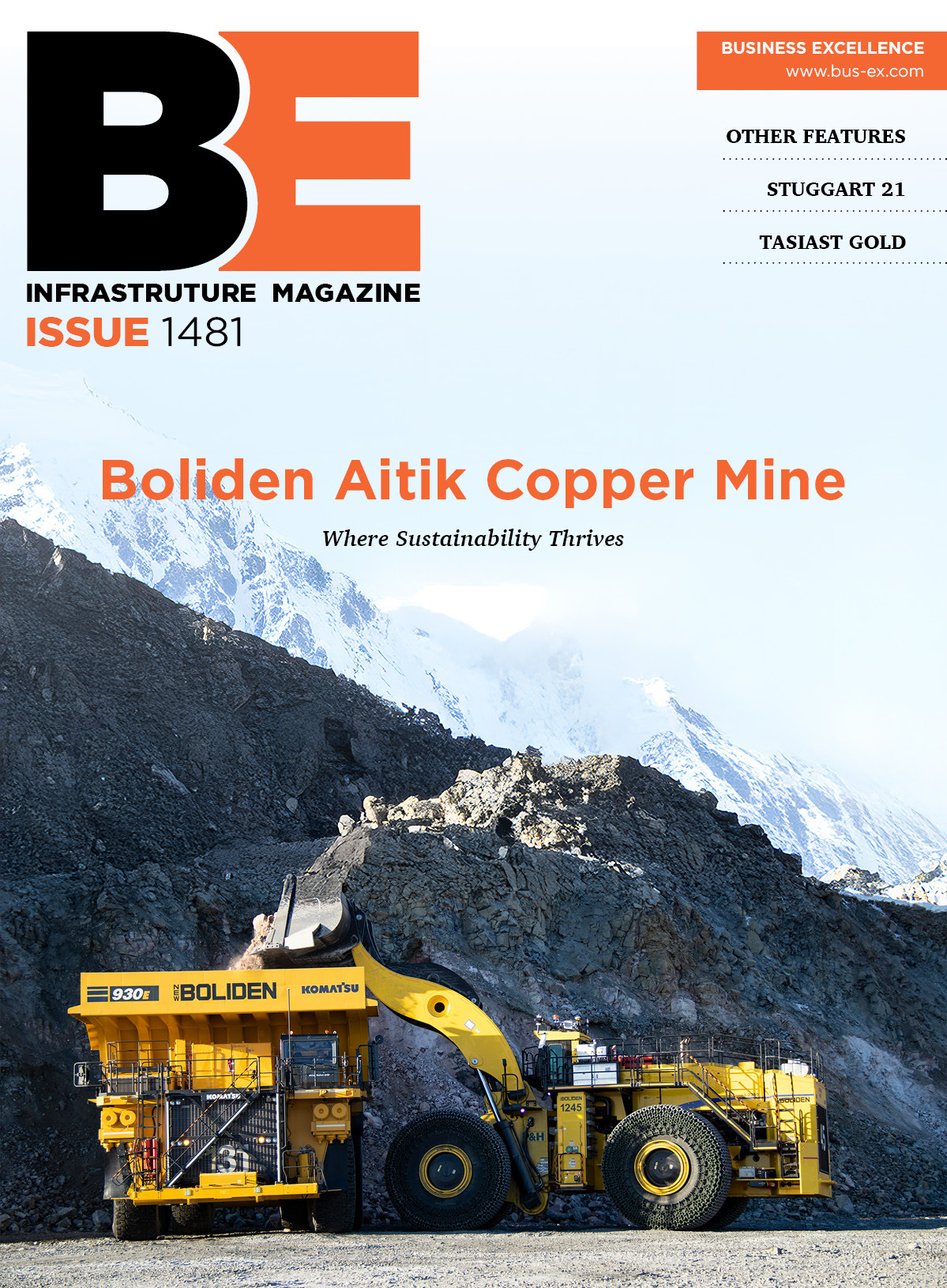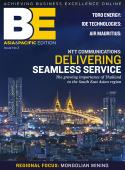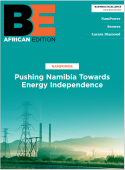WeÔÇÖve got the powerAfter thirty years treading water, the nuclear power industry in the US is undergoing a renaissance. Paul Hinnenkamp, vice president of nuclear business development for Entergy Corporation, tells Martin Ashcroft how the company is responding. When you look at our generating requirements, with the rising cost of oil and natural gas, prospective legislation on carbon taxes, and then figure in climate change, youÔÇÖve got to have nuclear in that picture,ÔÇØ says Paul Hinnenkamp, vice president of nuclear business development for Entergy Corporation.He makes a compelling case. With the demand for energy in the United States expected to rise forty percent by 2030, energy generation is one of the most critical issues of our time. Concerns about our dependence on imported fossil fuels, coupled with the soaring cost of that fuel and the environmental effects of burning it, have led to increased interest in alternative fuel sources.Many column inches have been published about the merits of hydro-electric power, wind power, solar power, and other so-called ÔÇ£renewablesÔÇØ. These are all valuable, says Hinnenkamp, ÔÇ£but theyÔÇÖre not going to fill the gap. Nuclear is the only economically viable and technically proven source for the large scale, base load generation of clean, affordable power.ÔÇØThe federal government has realized that, too, and has begun to offer incentives for the construction of new nuclear power plants through its Energy Policy Act of 2005, and more specifically, its Nuclear Power 2010 Program. Entergy Corporation is an integrated energy company engaged primarily in the generation of electric power and retail distribution operations. Headquartered in New Orleans, the company operates over 40 plants using natural gas, nuclear, coal, oil and hydroelectric power with approximately 30,000 megawatts of electric generating capacity to serve its 2.7 million customers in the Gulf South. As the second-largest nuclear generator in the United States, with its nuclear headquarters in Jackson, Mississippi, Entergy currently operates twelve nuclear power reactors, five in its core area in the south, and seven in the northeast and midwest. This number could be about to increase, however, as the company positions itself to take advantage of a resurgence in nuclear power generation.ÔÇ£There are expected to be at least 23 license applications representing 34 new nuclear plants in the United States over the next two years,ÔÇØ says Hinnenkamp, but that does not mean that 34 new plants are going to be built. ÔÇ£By 2020 there should be around four to eight new plants online. WhatÔÇÖs critical is that the first few are done very, very well. If they get done with high quality, and meet their schedules and cost targets, there will be quite a few more.ÔÇØAfter nuclear had been on the back burner, as it were, for decades, a groundbreaking initiative in the licensing process has helped to kick-start interest in new generation facilities. ÔÇ£A number of utilities have filed what is called a construction and operating license application,ÔÇØ says Hinnenkamp. ÔÇ£So far, eight applications for thirteen new plants have been filed with the Nuclear Regulatory Commission. This is a significant development.ÔÇØ The last nuclear power plants to be built had to go through two independent licensing applications, one for construction and another for operation. ÔÇ£During the previous builds, when you got the construction license you started building the plant,ÔÇØ says Hinnenkamp, ÔÇ£and then you applied for the operating license. You invested hundreds of millions of dollars but you still didnÔÇÖt have the operating license. Then if there were problems with the operating license it held up final completion and led to soaring cost overruns.ÔÇØ Federal regulations have since been revised to unify the licensing process into what is now called the combined construction and operating license (COL). ÔÇ£It is expected to be a very significant risk mitigator,ÔÇØ says Hinnenkamp.Entergy filed one application earlier this year, for a second reactor at its Grand Gulf site in Port Gibson, Mississippi, 60 miles southwest of Jackson, and expects to file a second before the end of the year for its River Bend Station site in Louisiana, where it already owns and operates one reactor.The application for Grand Gulf was sponsored by NuStart, a consortium of ten utilities and a few other industry partners including GE and Westinghouse. ÔÇ£The utilities have jointly funded the development of the application and will also fund the approval of it,ÔÇØ says Hinnenkamp. It was a way for the utilities to share some of the cost and demonstrate that the new process will work.ÔÇØ If the application is approved and Entergy makes the decision to build, it will repay the NuStart membersÔÇÖ contributions.But an application for a license does not commit the company to building a nuclear reactor, and certainly not two at the same time. Nuclear power plants have long lead times and huge capital budgets. The application and approval process takes three to four years, not to mention the two to three years for an early site permit which precedes it, to address site safety and environmental protection issues, among other things. Economic conditions can change greatly in that length of time.ÔÇ£When we look at the economic analysis of a new nuclear plant relative to the alternatives of coal or natural gas it is economically competitive now and it would currently be the right decision to build. But you donÔÇÖt know what the economics are going to look like in 2010 to 2012. You donÔÇÖt need to make the final commitment today. We filed for our site in Mississippi early this year and we expect to get approval for that license application in early 2012. For a first site deployment, we would be looking for a commercial operation date of maybe around 2018. We would expect to have one of the first few, but we would not build two in parallel. If we build two we would stagger them. We are currently evaluating our new build options and the Shaw Group is helping us in that effort.ÔÇØWhile there might seem to be plenty of time before the final decision needs to be made, there are some time constraints that propel the projects forward, however. One, for instance, is tied to the incentives contained in the Energy Policy Act of 2005. ÔÇ£Those incentives have timelines associated with them,ÔÇØ explains Hinnenkamp. ÔÇ£To get in the pool for the incentives you have to get your license application developed and submitted by the end of this year.ÔÇØAnd thatÔÇÖs no small task, either. In fact itÔÇÖs a huge investment. ÔÇ£The license application for Grand Gulf ran to 13,600 pages,ÔÇØ says Hinnenkamp, ÔÇ£and weÔÇÖre spending significant capital dollars to develop the second construction and operation license application for River Bend.ÔÇØThere are items of capital equipment that need to be ordered well in advance of the construction decision, too, because of bottlenecks in the supply chain. Japan Steel Works, formed in 1907 to produce gun barrels for the Imperial Japanese Navy, can be said to hold the key to the pace of the nuclear renaissance. It is currently the only facility in the world capable of forging the industryÔÇÖs huge reactor pressure vessels in one piece, and its order book is full to the end of 2010. With 130 new reactors projected to be built around the world by 2030, JSW is investing millions to expand production from five units a year to eight. ÔÇ£A reactor pressure vessel may be 100 feet high with 1000 tons of steel when itÔÇÖs finished,ÔÇØ says Hinnenkamp. ÔÇ£ThatÔÇÖs a pretty significant effort which takes four or five years to do. We have already secured the delivery of one set of those forgings, as well as the rotors for the steam turbine generator. We are making phased, disciplined decisions to position ourselves to be able to build a nuclear plant before the 2020 time frame, to be able to get the federal incentives and to meet our base load generation requirements, assuming this option is in the best interest of our customers and key stakeholders.ÔÇØ Government incentives have been designed to encourage early activity and to reward speed (if thatÔÇÖs the right word for a process that can take fifteen years from drawing board to opening ceremony). One of the three incentives is a production tax credit of 1.8 cents per kilowatt hour for the first 6,000 megawatts of energy produced, but to qualify for it, the plant has to be commercially operational by January 1, 2021. ÔÇ£There are a couple of other hurdles before that,ÔÇØ says Hinnenkamp, ÔÇ£but itÔÇÖs a heck of an incentive. It could be worth several $100 million.ÔÇØThe second incentive is for the first six new plants constructed. ÔÇ£This is called a stand-by support contract to cover regulatory delays,ÔÇØ says Hinnenkamp. ÔÇ£For the first two plants it will cover up to $500 million, and up to $250 million for the next four. It is uncertain how valuable this incentive will be, and by itself is not a reason to be one of the first six plants built.ÔÇØ The final item is a loan guarantee provided by the federal government. ÔÇ£The current authorization is for $18.5 billion. That seems like a big number, and it is, but itÔÇÖs one area where we think the federal government needs to do more. $18.5 billion will only be enough to get things started. There needs to be a second round of loan guarantees to support the continued development of new nuclear.ÔÇØOne of the current attractions of nuclear power is that its generation does not produce carbon dioxide, a huge plus-factor on the climate side of the equation. On the other hand, there have been accidents in the past, and it does produce radioactive waste, about which there is huge public concern. But Three Mile Island was 30 years ago, and the industryÔÇÖs safety record has been excellent since then. ÔÇ£As far as waste is concerned,ÔÇØ Hinnenkamp points out, ÔÇ£we are the only industry that takes responsibility for our waste. We donÔÇÖt release it into the air or otherwise dispose of it; we take care of it ourselves.ÔÇ£You absolutely have to take proper care of it,ÔÇØ he continues, ÔÇ£but there is a potential for the future in reprocessing that waste. ItÔÇÖs being done very successfully in Japan, France and elsewhere, and I think we will see it again one day here in the United States. The issues in taking care of spent fuel are political, not safety and not technical.ÔÇØ Public opinion is coming around, too. A 2007 survey asking people if they were in favor or opposed to new nuclear power plants came out about equal. ÔÇ£In 2008 itÔÇÖs now pushing 60 percent in favor. ThatÔÇÖs a significant change in a year.ÔÇØ┬á









